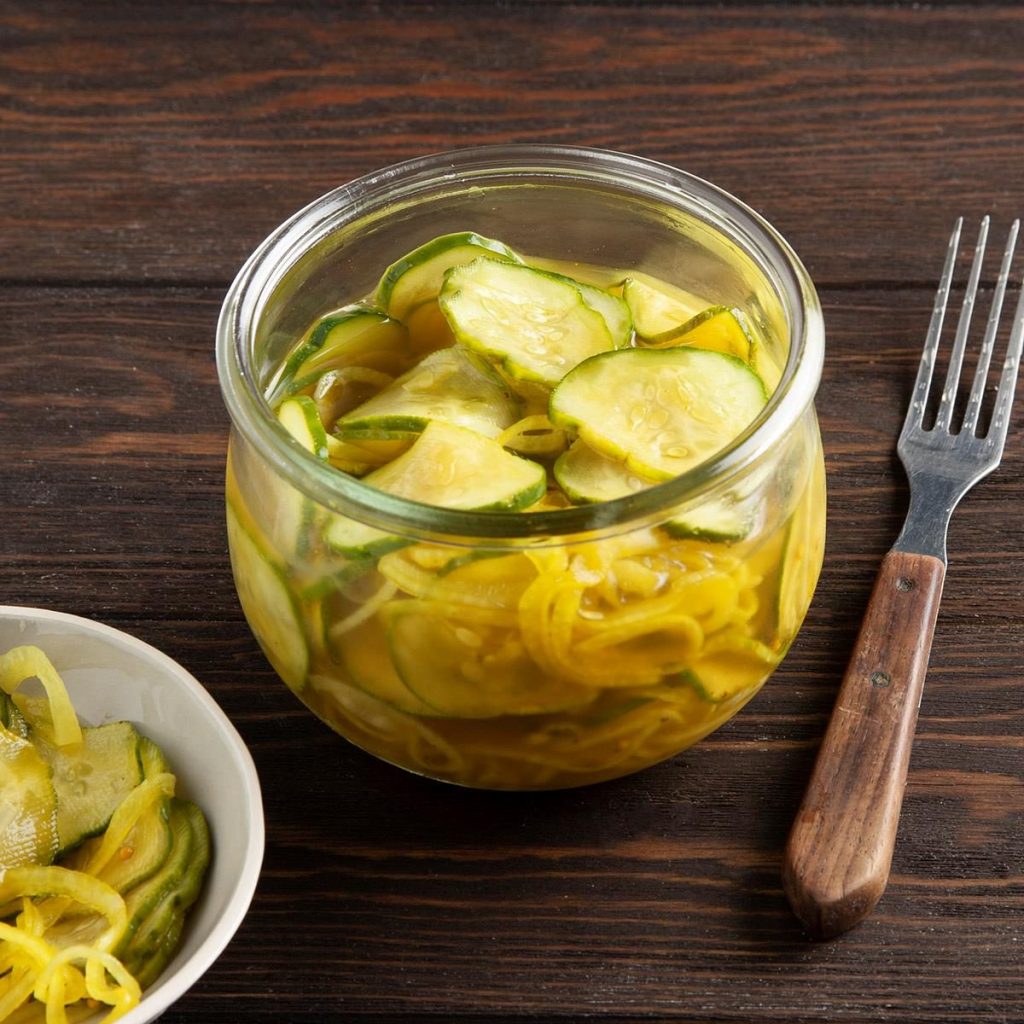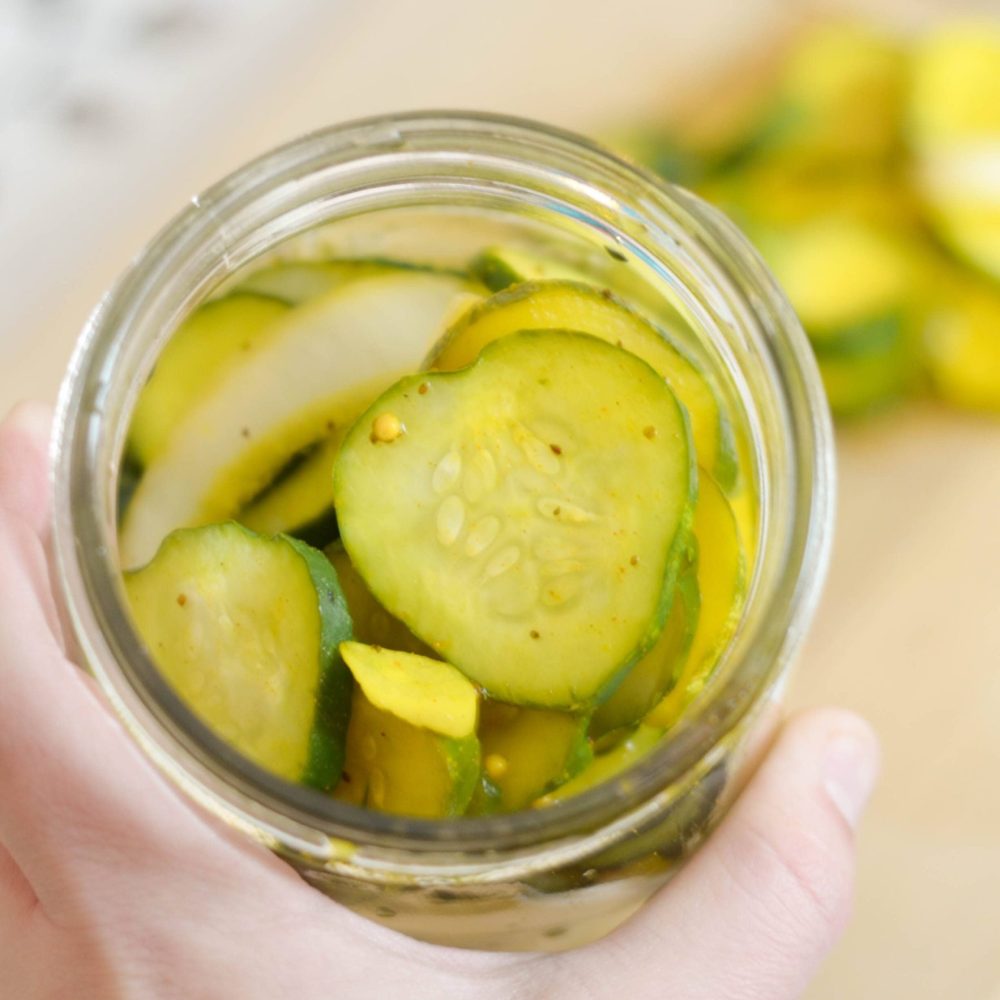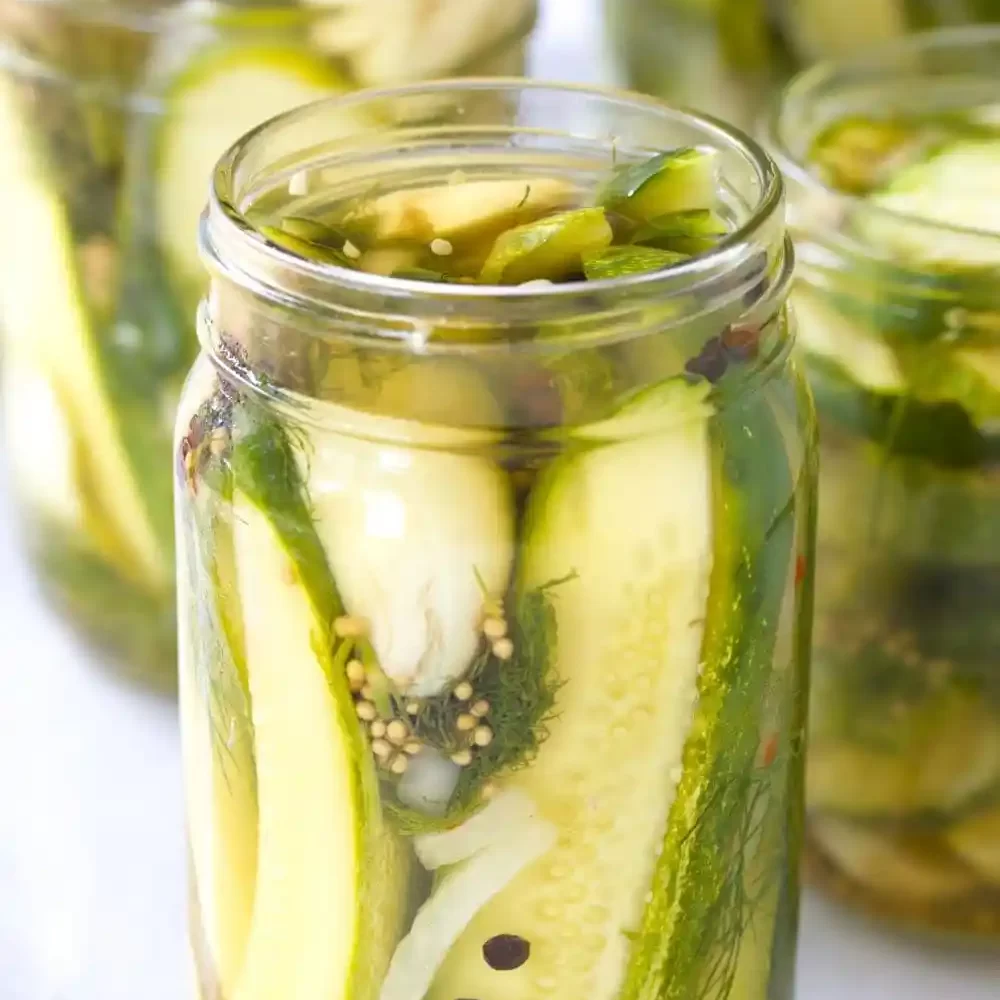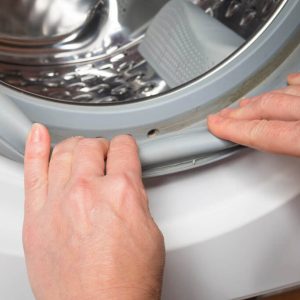Refrigerator Pickles: A Crunchy Delight
The Basics of Refrigerator Pickling
What Are Refrigerator Pickles?
Refrigerator pickles are cucumbers (or other vegetables) that have been preserved in a vinegar-based brine and stored in the refrigerator. Unlike commercially canned pickles, which are shelf-stable, refrigerator pickles are meant to be consumed within a shorter timeframe, typically lasting up to two months when properly stored. This preservation method relies on the acidity of the brine to inhibit bacterial growth, allowing the vegetables to stay fresh and flavorful without the need for heat processing.
Why Choose Refrigerator Pickles?
There are several reasons why individuals might opt for refrigerator pickles over traditional canned varieties:
- Simplicity: The process requires fewer steps and less equipment compared to canning.
- Flexibility: Easily adjust flavors and ingredients to suit personal preferences.
- Time-Efficient: Quick to prepare and can be ready to eat within a few days.
- Safety: Lower risk of contamination since they are stored in the refrigerator.
- Freshness: Maintains the crispness and vibrant flavors of fresh vegetables.
Essential Ingredients
Creating delicious refrigerator pickles hinges on using the right combination of ingredients. The basic components typically include:
- Vegetables: Cucumbers are the most popular choice, but other vegetables like carrots, cauliflower, green beans, and peppers can also be pickled.
- Vinegar: White vinegar, apple cider vinegar, or other types provide the necessary acidity.
- Water: Dilutes the vinegar to achieve the desired acidity level.
- Salt: Acts as a preservative and enhances flavor.
- Sugar: Balances the acidity and adds sweetness.
- Spices and Herbs: Common additions include garlic, dill, peppercorns, mustard seeds, and red pepper flakes for added flavor complexity.
Step-by-Step Guide to Making Refrigerator Pickles
Choosing the Right Vegetables
The foundation of any great pickle is the quality of the vegetables used. Fresh, firm vegetables yield the best results. Here are some popular choices:
- Cucumbers: Pickling cucumbers are preferred for their smaller size and firm texture.
- Carrots: Offer a sweet and crunchy texture.
- Cauliflower: Adds a unique crunch and absorbs flavors well.
- Green Beans: Provide a delicate flavor and crispness.
- Peppers: Bring a spicy kick to your pickles.
Preparing the Vegetables
Proper preparation ensures that your pickles are safe to eat and have the desired texture. Follow these steps:
- Wash Thoroughly: Rinse all vegetables under cold running water to remove dirt and impurities.
- Trim and Slice: Cut vegetables into uniform sizes to ensure even pickling. For cucumbers, slices can range from thin rounds to spears, depending on preference.
- Blanching (Optional): Briefly boiling certain vegetables like cauliflower or green beans can help maintain their color and texture.
Making the Brine
The brine is crucial for flavor and preservation. A basic brine consists of vinegar, water, salt, and sugar. Here’s a simple ratio to follow:
- 1 cup of vinegar
- 1 cup of water
- 1 tablespoon of salt
- 1 tablespoon of sugar
Customizing the Brine
Feel free to experiment with different types of vinegar and adjust the salt and sugar levels to suit your taste. For example:
- Vinegar Variations: Apple cider vinegar adds a subtle sweetness, while rice vinegar offers a milder flavor.
- Sweetness Levels: Reduce or increase sugar for sweeter or tangier pickles.
- Salt Alternatives: Use kosher salt or pickling salt for the best results.
Adding Flavor with Spices and Herbs
Enhance the complexity of your pickles by incorporating various spices and herbs. Common additions include:
- Garlic: Adds a robust flavor.
- Dill: Essential for classic dill pickles.
- Mustard Seeds: Provide a subtle heat and tang.
- Peppercorns: Introduce a mild spiciness.
- Red Pepper Flakes: For those who prefer a spicy kick.
Assembling the Pickles
- Sterilize Jars: Although not strictly necessary for refrigerator pickles, it’s good practice to use clean, sterilized jars to prevent contamination.
- Pack Vegetables: Place the prepared vegetables into the jars, leaving some space at the top.
- Add Spices and Herbs: Distribute the chosen spices and herbs evenly among the jars.
- Pour the Brine: Carefully pour the hot brine over the vegetables, ensuring they are fully submerged.
Refrigeration and Storage
Once assembled, seal the jars with lids and place them in the refrigerator. Allow the pickles to marinate for at least 24 hours before consuming, though flavors deepen significantly after a few days. Store refrigerator pickles in the coldest part of your fridge to maintain their crispness and prevent spoilage.
Popular Refrigerator Pickle Recipes
Classic Dill Refrigerator Pickles
Ingredients
- 4-5 small cucumbers, sliced into spears or rounds
- 2 cups white vinegar
- 2 cups water
- 3 tablespoons kosher salt
- 2 tablespoons sugar
- 4 cloves garlic, smashed
- 2 tablespoons fresh dill or 2 teaspoons dried dill seeds
- 1 teaspoon black peppercorns
- 1 teaspoon mustard seeds
Instructions
- In a saucepan, combine vinegar, water, salt, and sugar. Bring to a boil, stirring until salt and sugar dissolve.
- In clean jars, add garlic, dill, peppercorns, and mustard seeds.
- Pack cucumber slices into the jars, leaving about half an inch of headspace.
- Pour the hot brine over the cucumbers, ensuring they are fully submerged.
- Seal the jars and let them cool to room temperature before refrigerating.
- Wait at least 24 hours for flavors to develop. Enjoy within two months.
Spicy Refrigerator Pickles
Ingredients
- 1 pound baby cucumbers, trimmed
- 3 cups apple cider vinegar
- 3 cups water
- 3 tablespoons pickling salt
- 3 tablespoons sugar
- 4 cloves garlic, thinly sliced
- 2 tablespoons red pepper flakes
- 2 tablespoons black peppercorns
- 1 tablespoon coriander seeds
Instructions
- Combine vinegar, water, salt, and sugar in a saucepan. Bring to a boil, stirring until salt and sugar dissolve.
- In sterilized jars, place garlic slices, red pepper flakes, peppercorns, and coriander seeds.
- Add cucumbers to the jars, packing them tightly without crushing.
- Pour the hot brine over the cucumbers, ensuring full coverage.
- Seal the jars and allow them to cool before refrigerating.
- Let the pickles sit for at least 48 hours for maximum spiciness. Consume within two months.
Bread and Butter Refrigerator Pickles
Ingredients
- 4 cups thinly sliced cucumbers
- 1 large onion, thinly sliced
- 2 cups apple cider vinegar
- 2 cups water
- 1/2 cup sugar
- 3 tablespoons kosher salt
- 1 tablespoon mustard seeds
- 1 teaspoon celery seeds
- 1/2 teaspoon turmeric
Instructions
- In a large bowl, combine cucumbers and onions.
- In a saucepan, bring vinegar, water, sugar, and salt to a boil, stirring until dissolved.
- Add mustard seeds, celery seeds, and turmeric to the brine.
- Pour the hot brine over the cucumber and onion mixture, ensuring everything is submerged.
- Transfer the mixture to jars and let cool to room temperature.
- Refrigerate for at least 24 hours before serving. These pickles are best enjoyed within one month.
Tips for Perfect Refrigerator Pickles
Achieving Crispness
Crisp pickles are a hallmark of a well-made refrigerator pickle. Here are some tips to ensure your pickles stay crunchy:
- Use Fresh Vegetables: Older vegetables tend to be softer and may not hold up well during pickling.
- Avoid Overcooking: Overcooking can cause vegetables to become mushy. Ensure the brine is hot but not boiling when pouring over the vegetables.
- Add Natural Crisping Agents: Ingredients like grape leaves, oak leaves, or a small amount of calcium chloride (found in pickling supplies) can help maintain crispness.
- Proper Storage: Store pickles in the coldest part of your refrigerator to prevent them from becoming soft.
Balancing Flavors
Finding the perfect balance between tangy, sweet, and salty is key to enjoyable refrigerator pickles. Adjust the quantities of vinegar, sugar, and salt based on your personal preferences. Start with the basic ratios and tweak incrementally until you achieve the desired flavor profile.
Experimenting with Vegetables
While cucumbers are the star of most refrigerator pickles, don’t hesitate to experiment with other vegetables. Carrots, beets, green beans, and even fruits like strawberries or watermelon can make excellent pickles. Each vegetable absorbs the brine differently, offering unique textures and flavors.
Cleaning and Sterilizing Jars
Although refrigerator pickles do not require the same level of sterilization as canned pickles, using clean jars is essential to prevent spoilage. Here’s how to prepare your jars:
- Wash Thoroughly: Use hot, soapy water to clean jars and lids.
- Rinse Well: Ensure all soap residue is removed.
- Sterilize (Optional): Boil the jars and lids in water for 10 minutes to further ensure they are free from bacteria.
Troubleshooting Common Issues
Even with careful preparation, you might encounter some common issues when making refrigerator pickles:
- Soft Pickles: This can result from overcooking, insufficient acidity, or lack of crisping agents. Review your process and adjust accordingly.
- Flat Flavors: Ensure that you are using enough spices and allowing enough time for the pickles to marinate. Taste and adjust seasoning if necessary.
- Cloudy Brine: Minor cloudiness is normal, but excessive cloudiness may indicate contamination. Always use clean utensils and jars.
Health Benefits of Refrigerator Pickles
Probiotics and Gut Health
Fermented refrigerator pickles, although primarily made with vinegar, can still offer some probiotic benefits if naturally fermented. Probiotics are beneficial bacteria that support digestive health, improve immune function, and enhance nutrient absorption. Including probiotic-rich foods like pickles in your diet can contribute to a healthier gut microbiome.
Low in Calories
Refrigerator pickles are generally low in calories, making them an excellent choice for those watching their calorie intake. They provide a satisfying, tangy flavor without adding significant calories to your meals.
Rich in Antioxidants
Many of the vegetables used in pickles, such as cucumbers and carrots, are rich in antioxidants like vitamin C and beta-carotene. Antioxidants help protect the body against free radicals, reducing the risk of chronic diseases and promoting overall health.
Preservation of Nutrients
The pickling process can help preserve the vitamins and minerals in vegetables, extending their shelf life while maintaining their nutritional value. This makes refrigerator pickles a practical way to enjoy nutrient-dense foods year-round.
Storing and Serving Refrigerator Pickles
Proper Storage Techniques
To maximize the shelf life and quality of your refrigerator pickles, follow these storage guidelines:
- Temperature: Keep pickles in the main body of the refrigerator rather than the door to maintain a consistent temperature.
- Containers: Use airtight glass jars to prevent exposure to air, which can degrade the quality of the pickles.
- Avoid Contamination: Always use clean utensils when handling pickles to prevent introducing bacteria.
Serving Suggestions
Refrigerator pickles are versatile and can enhance a variety of dishes. Here are some serving ideas:
- Snacks: Enjoy pickles straight from the jar as a tangy, crunchy snack.
- Sandwiches and Burgers: Add pickles to sandwiches and burgers for extra flavor and texture.
- Salads: Incorporate chopped pickles into salads for a burst of acidity.
- Charcuterie Boards: Serve pickles alongside cheeses, meats, and crackers for a well-rounded appetizer.
- Toppings: Use pickles as toppings for pizzas, tacos, or nachos to elevate your dishes.
 Conclusion
Conclusion
Refrigerator pickles offer a delightful and accessible way to preserve vegetables, infusing them with vibrant flavors and maintaining their crisp texture. From classic dill pickles to creative variations like sweet and spicy or herb-infused options, the versatility of refrigerator pickles makes them a valuable addition to any culinary repertoire. Not only do they enhance a wide range of dishes, but they also provide numerous health benefits, including probiotics and essential nutrients. Whether you’re looking to experiment with new flavors or maintain a steady supply of delicious pickles without the hassle of traditional canning, refrigerator pickles are an excellent choice. Embrace the simplicity and flexibility of this preservation method, and enjoy the tangy, crunchy rewards that refrigerator pickles bring to your table.



